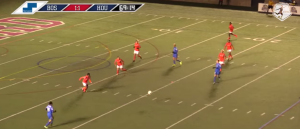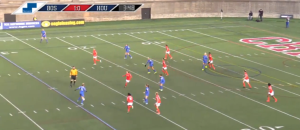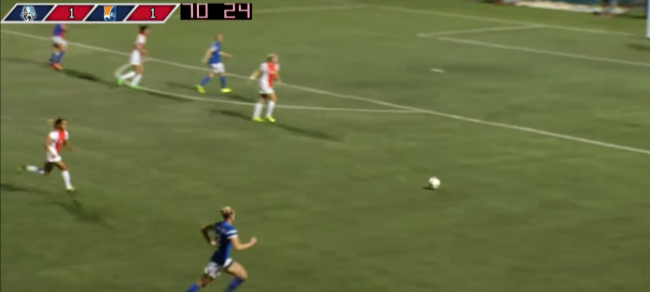Two things I wanna start off with. First sorry for missing last week. To my ten readers I hope you made it through the week without my analysis, if you did not then sadly I am most likely back to the single digits when it comes to readers. But for those of you that stuck with me, there will most likely be an extra post this week looking at the some of the more advanced statistics of the NWSL season so far.
Secondly this blog post will be sadly missing pictures that have so far been a staple of these posts. The reason being that the Youtube footage that provides the pictures usually is no longer online. So while I was able to review it, I was not able to take down some pictures. That being said so you don’t have to read a wall of text, this post will be a little shorter.
Summary:
The rematch of the inaugural NWSL Championship game was slated to be an exciting one. Goals were expected as you had Abby Wombach and Christine Sinclair as the marquee match up. However both teams worked hard to limit the two striker’s chances. The big way that this was done was congesting the middle.
In today’s modern game, more space is going to be found on the flanks. As teams move to protect the middle with bodies and people, room is opened up out wide for players. That is why you see a lot of strikers drift out side for the ball, because that is where they can safely receive the ball. For example if you look at my last recap Boston Breaker’s Lisa DiVanna was often seen receiving the ball on the flanks. This is because that is where the space is.
Damned if you do:
For most of the game, the two teams canceled each other out. The goals themselves had a few things in common, that being they were created by open crosses. On both plays the ball is sent in from wide and the defender or goalie are forced into a mistake because of the quality of the ball.
Looking at the Western New York goal, the ball is crossed in from out wide. As the Western New York striker takes it, the Portland defense is instantly on their heals. Even though it is still a 2 v 1 situation, the Western New York striker is able to cut the ball by one defender taking her out of the play. She then forces the second defender to defend her 1v1. She then makes a move to go around her marker. The Portland defender knowing that she has no help is forced to foul to prevent a break away with the goalie. The free kick is pocketed top corner and Western New York take the lead.
What causes this whole chain of events is the fact that Portland left the flank open for the Western New York player to receive that ball. With time and space the fullback is forced to come out and defend her, the problem was the full back, previously narrow to help congest the middle, has too much space to make up. Portland played narrow not to let any plays develop through the middle, however when the ball went out wide, the defense became stretched leaving the central defenders on an island.
Damned if you don’t:
On the Portland goal, the immediate culprit is is the goalie for giving up the rebound. It is hard to argue against that, the ball is muffed by the goalie and a Portland attacker is quick to pounce on it and tap it into essentially what was an open goal. It seems simple to blame Western New York’s goalie, and on some level you can, but that doesn’t tell the whole story.
Much like the Western New York goal, the chain of events was caused by the space on the flanks. While Portland tried to close down on the ball out wide, Western New York didn’t, giving Portland time to tee up a perfect cross. One of the reasons the goalie fumbles it is because the quality of the ball delivered. The ball goes over the Western New York defender who tries to clear the ball, and dips right in front of the goalie, making it look much easier than it actual was to hold on to the ball.
Conclusion:
As more teams try to stuff the middle and force the play out wide, it is going to be interesting to see how they deal with the play once it is out on the flanks. In week 2 we saw Houston try to shift as a unit to contain the play, but they also gave up 2 goals one of which came from a Heather O’Reilly cross. This week we saw another two strategies. Closing the player down out wide once they receive the ball, and trying to stay compact once they have.
Right now it seems that the problem is that the player can’t receive the ball in space. That if the player gets the ball it is already too late. Teams are going to have to figure this out how to deal with it if their game plan is to keep packing the middle of the field, and clogging the midfield. Tactically it will be interesting to see how teams not only defend the space on the flank, but attack it as well.








